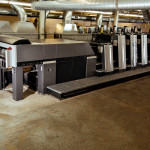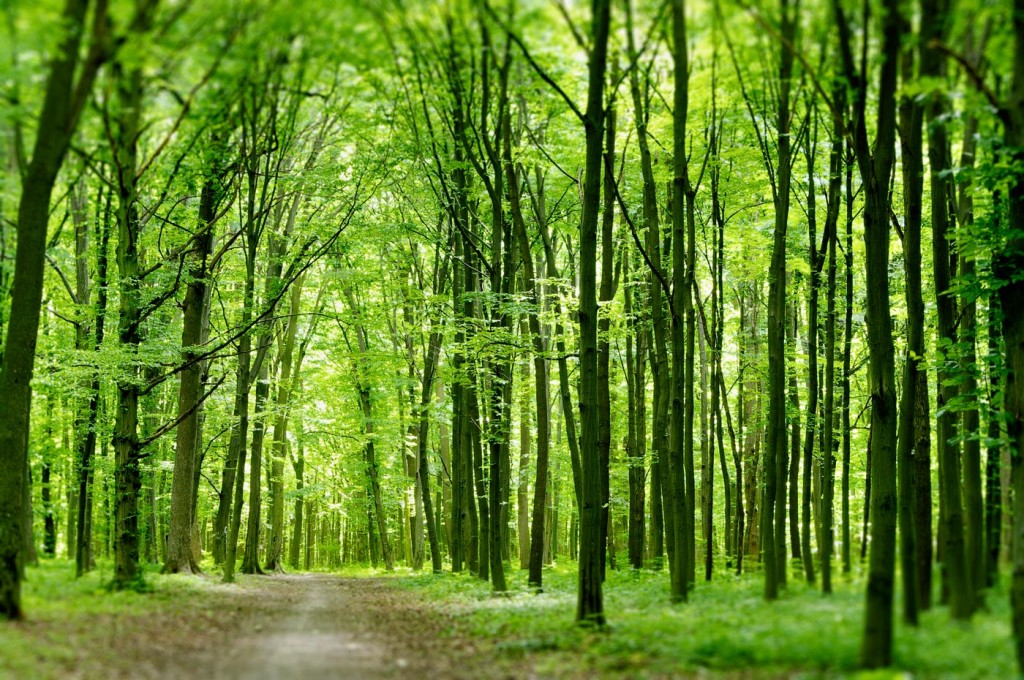
3 Rules For Sustainable Printing
Printing Sustainably Doesn’t Need to Be Hard or Expensive
Historically, print has been a dirty business: colorful, chemical-laden goo smeared on top of dead trees. While most print businesses use all the right buzzwords, their claims often lack substance. Or, even worse, we’re fed the Whole Foods model — that the only sustainable options are expensive and luxurious. The best thing most designers could do, if they were truly committed to the environment, would be to avoid print. Go digital, it’s the only way to be sure, right? Wrong.
Print is awesome. Even the most jaded designers get excited when the box comes back from the printer. So, we are left with a challenge: How do we balance our ethical and creative needs? How can you be sure that your prints are only making the good kind of impact?
Well, sustainable printing boils down to three broad topics: inks, production and paper. It’s worth noting that this only applies to traditional offset presses. Digital offset printing is a different animal, where the environmental conversation is much more nuanced based on the specifics of what you’re printing. Digital prints can be very sustainable, it’s just that the stats are different.
Inks & Coatings
The standard has been set by petroleum-based inks. They’re consistent, vibrant and — due to tons of harsh additives — fast drying. In the past 15 years, vegetable-based inks — where up to 70% of the ink is bio-derived — have improved to where they can compete head-to-head with their traditional counterparts in every way, no additives required.
In addition to obvious benefits, vegetable-based inks also release significantly less VOCs into the environment and are easier to de-ink in the recycling process. “We have a responsibility to take care of the planet and each other,” says Jakprints Co-Founder Dameon Guess. “Vegetable-based inks are better for our employees, the environment and the recyclers. Plus, they’re completely biodegradable. I couldn’t imagine printing with anything else.”
Production
On traditional offset presses, paper run through the press during setup are called makereadys. This is a huge source of production waste. Each press differs; but, 400-1000 sheets is typical. That’s 1000 press sheets that go straight in the recycling bin before your job has even run, yikes! For a printer like Jakprints, makereadys accounted for almost 40% off their paper use.
 New innovations in the industry are changing all that. While it’s still very exclusive, Heidelberg’s new Speedmaster XL 75 Anicolor Offset Press can produce makereadys in as few as 30 sheets. “Customers never saw how much waste was going into makereadys,” says Guess. “As soon as we saw what the new Heidelberg was able to do, we worked with them to get the first delivery in North America. It’s incredible, we’re literally saving 16 trees per day with this press. The phrase is reduce, reuse and recycle. It’s important that we don’t only focus on recycling.”
New innovations in the industry are changing all that. While it’s still very exclusive, Heidelberg’s new Speedmaster XL 75 Anicolor Offset Press can produce makereadys in as few as 30 sheets. “Customers never saw how much waste was going into makereadys,” says Guess. “As soon as we saw what the new Heidelberg was able to do, we worked with them to get the first delivery in North America. It’s incredible, we’re literally saving 16 trees per day with this press. The phrase is reduce, reuse and recycle. It’s important that we don’t only focus on recycling.”
That kind of savings can have a huge environmental impact. Over the course of a year, 16 trees per day is enough to forest more than 11 football fields.
Paper
Counterintuitively, responsible forestry can actually be good for the environment. To maintain supply while growing their business, tree farms are planting more than they cut down. Well-managed forests avoid encroaching on protected habitats and environments. And, responsible growers are typically located in North America and Europe where there are strict environmental regulations, too. Look for PEFC, SFI or FSC certification on any papers that your printer uses. These groups will check on the forests and certify chain-of-custody throughout paper’s production process.
What can a designer do? Stay informed. Any company can talk about being green, but being green is different. Know the difference. Ask your printer the hard questions, and make sure you feel good about their answers.
Trees for the Future
To ensure that every order was having a net positive environmental impact, Jakprints began planting one tree with every order. To accomplish this, they’ve partnered with Maryland-based Trees for the Future — an agroforestry non-profit whose work deserves way more attention.
What the heck is “agroforestry” and why haven’t you seen any weepy, Sarah McLachlan commercials about it? Technically, it’s a combination of agriculture, forestry and farming techniques which is often (poorly) summarized as “trees on farms”. Practically, it’s lifting up impoverished farmers while helping the environment.
Trees for the Future works with farmers throughout Latin America, Africa and Asia who are struggling with unproductive soils and drought-stricken farmlands. Through agroforestry, they’re literally changing local farmers’ lives by revitalizing farm lands, planting native (sometimes fruit bearing) trees, eliminating drought cycles and giving them a source of income. Oh, and planting millions of new trees is pretty great for the environment, too. Read more at trees.org.

